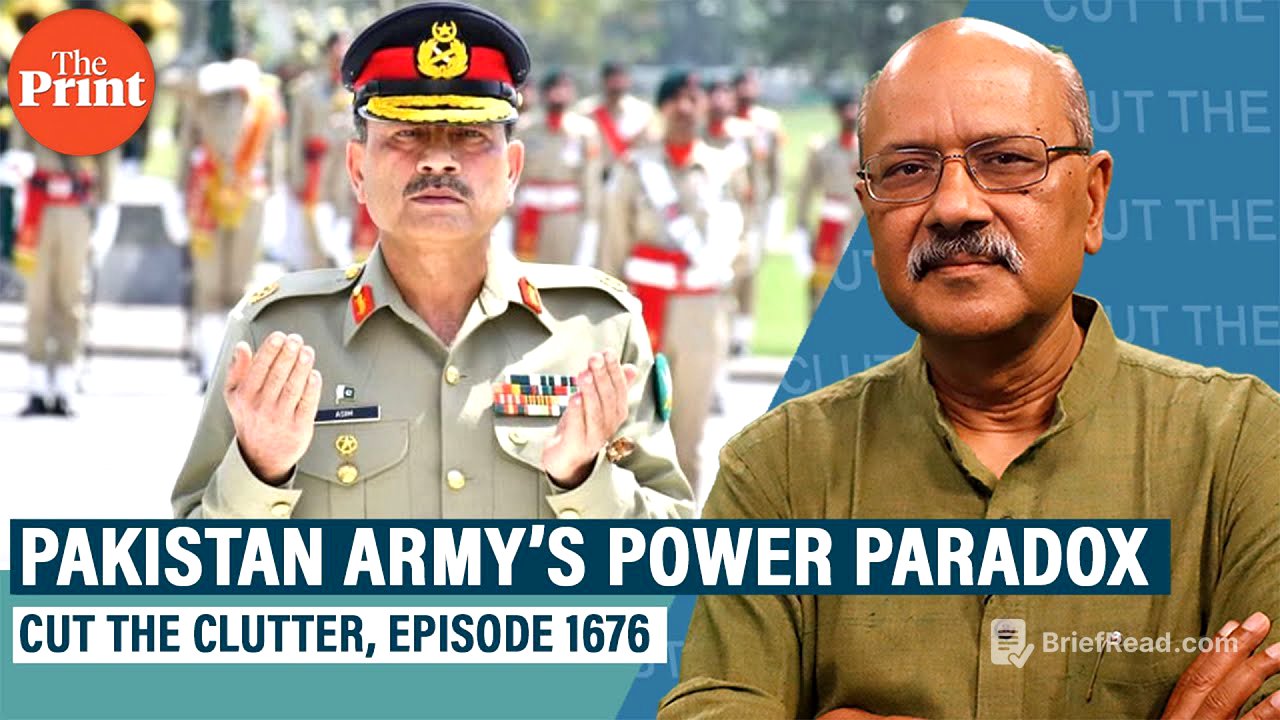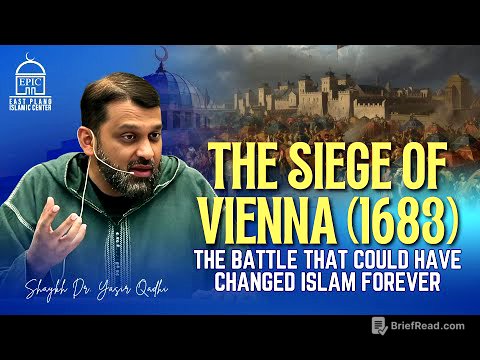TLDR;
This video analyzes the power structure in Pakistan, arguing that the army is the dominant force, not Allah (religious politics) or America. It examines historical events and current trends to support this claim, highlighting the army's control over national ideology, economy, and politics. The video also addresses the paradox of the army's continued popularity despite its failures and the manipulation of history to maintain its preeminence.
- The army, not religion or the US, defines Pakistan's power structure.
- The army has maintained power despite civilian governments.
- The army manipulates history and national ideology to maintain its dominance.
- Despite failures, the army remains popular, creating a paradox.
Introduction [0:47]
The video introduces the idea that Pakistan's power structure is primarily defined by its army, revisiting an argument made over a decade ago. This argument challenges the common perception that Pakistan is run by "army, Allah, and America." The video aims to demonstrate that the army is the central power, and this understanding has become increasingly relevant with recent political developments in Pakistan.
Challenging the "AAA" Theory [4:40]
The presenter challenges the long-held "Army, Allah, and America" theory, asserting it's outdated. He argues that neither religious politics ("Allah") nor the relationship with the United States defines Pakistan's power structure. Instead, the army solely dictates power and national ideology, benefiting from it while pretending to protect it. This perspective suggests a need to revise the understanding of Pakistani politics, society, and power dynamics.
Historical Examples of Army's Dominance [6:58]
The discussion provides historical context, citing examples such as Seymour Hersh's claims about the Osama bin Laden killing, where Pakistani generals allegedly made deals with the CIA without consulting the civilian government. The presenter recalls a personal anecdote involving Assad Durani, a former ISI chief, to illustrate the army's continuity and inside knowledge. These instances highlight the army's ability to operate independently and exert control even during elected governments.
Army's Control in Civilian Governments [11:42]
The video emphasizes that despite 17 years of uninterrupted elected civilian governments, the army remains the dominant power in Pakistan. Civilian governments have diminished in stature, while the army has expanded its influence into areas such as diplomacy and internal affairs. Examples include Imran Khan seeking the army's intervention and the army chief attending top political meetings, illustrating the army's pervasive control.
Paradox of Army's Popularity [13:55]
The presenter explores the paradox of why the army is held in awe despite its failures, such as losing territory and damaging the economy. He notes that while individual generals may be distrusted, the institution of the army remains respected. The army has the ability to redefine context and rewrite history, maintaining its image as the winner and protector of Pakistan.
Army's Post-Zia Ideology [21:42]
The video argues that the army has defined a post-Zia ideology for Pakistan, diverging from Jinnah's original vision. This ideology is institutionalized through textbooks, military mythologies, and curriculum, shaping the popular imagination. The army strategically uses alliances, such as with America in the 1950s and radicalism in the 1980s, to counter India and maintain its dominance.
The Poem's Postscript and its Significance [23:31]
The video concludes by revisiting a poem recited earlier, revealing that the Pakistani intelligence directorate omits the last four lines when distributing it to cadets. These lines speak of rebellion, selfish strife, and injustice, which the army likely excludes to maintain its preeminence. This omission illustrates how the institution customizes narratives to preserve its power. The video emphasizes the importance of understanding this dynamic, as the Pakistani army will continue to influence and potentially hinder India's progress.







![10명 중 9명이 틀린 문제?! 세계를 바라보는 시각을 교정해주는 [팩트풀니스] 요약](https://wm-img.halpindev.com/p-briefread_c-10_b-10/urlb/aHR0cDovL2ltZy55b3V0dWJlLmNvbS92aS93LWY3YUlsUFYzTS9ocWRlZmF1bHQuanBn.jpg)

